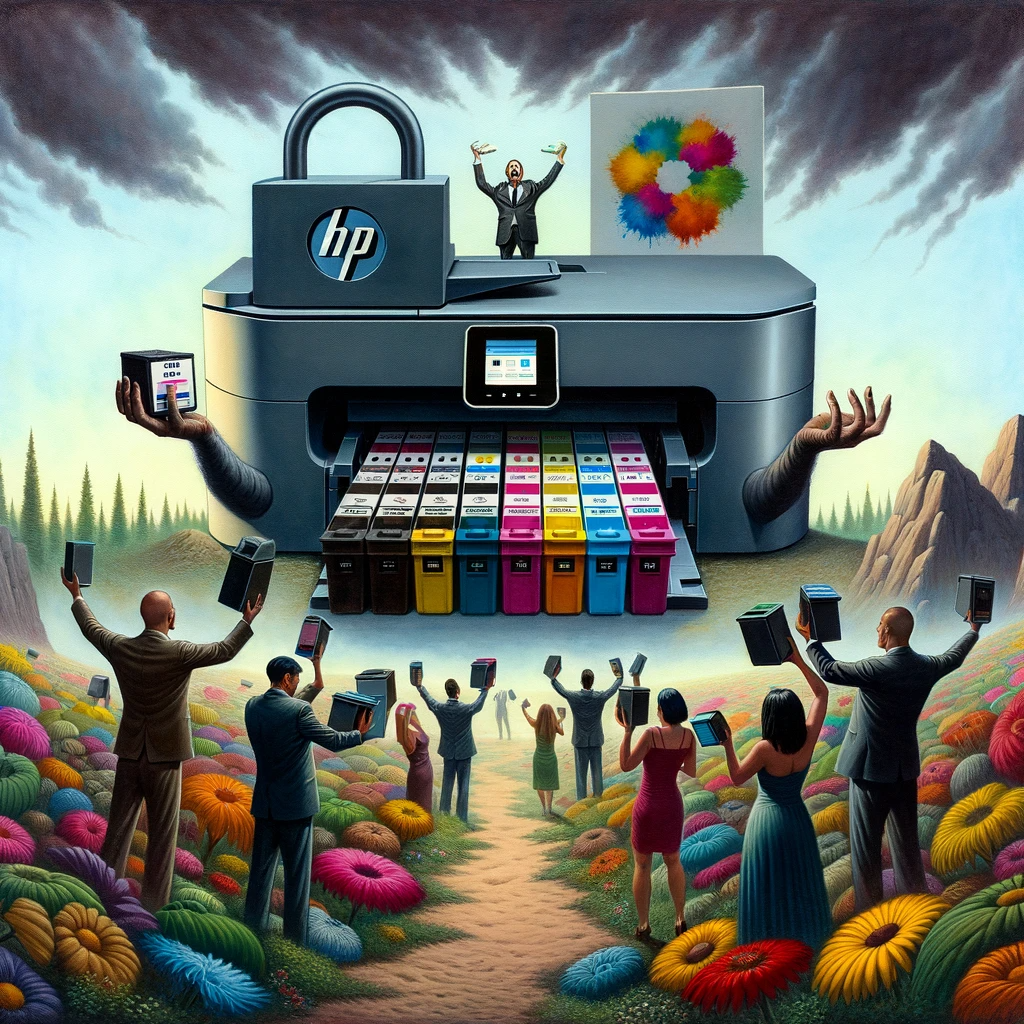Introduction
In the ever-evolving world of printer technology, HP has consistently remained a frontrunner, not just in terms of innovation but also in implementing measures that sometimes stir public debate. One such measure is HP’s ‘Dynamic Security’ feature, a topic that has recently garnered significant attention due to its implications for consumer choice and cybersecurity.
The Essence of HP’s Dynamic Security System
Dynamic Security, a system introduced by HP in 2016, is designed to authenticate ink cartridges used in HP printers. The primary goal is to ensure that only cartridges with original HP chips or circuitry are functional in their printers. This approach, while seemingly straightforward, has profound implications for consumers and third-party ink manufacturers alike.
How Dynamic Security Works
At its core, Dynamic Security scrutinizes the microcontroller chips within ink cartridges. These chips communicate with the printer, and if recognized as non-HP or modified, the system may prevent the printer from functioning with these cartridges. This mechanism is not static; HP’s firmware updates can alter which cartridges are accepted over time.
The Cybersecurity Perspective: A Dual-Edged Sword
HP CEO Enrique Lores’s statement to CNBC Television highlighted a cybersecurity angle, suggesting that third-party cartridges could potentially introduce viruses into printers and networks. This claim, however, is met with skepticism from industry experts.
Investigating the Cyberthreat Claim
- HP’s Research: Conducted through their bug bounty program, HP tasked researchers with exploring the possibility of ink cartridges being used as a cyberthreat. The research uncovered a theoretical vulnerability but did not demonstrate such an attack in real-world scenarios.
- Industry Skepticism: Cybersecurity professionals, including those engaged in embedded-device hacking, express doubts about the practicality and likelihood of such attacks, considering them far-fetched for general consumer risks.
Addressing Printer Security: Whose Responsibility?
The introduction of dynamic security raises an important question: Should the onus of securing printers against potential cyber threats fall on the manufacturer or the consumer? While HP’s system aims to mitigate risks, it simultaneously imposes restrictions on consumer choices, particularly regarding third-party ink usage.
The Balancing Act: Security vs. Consumer Autonomy
- HP’s Approach: By limiting printer functionality with non-HP cartridges, the company asserts its stance on ensuring security and protecting intellectual property.
- Consumer Experience: This restriction leads to an inconvenience for users, often compelling them to use HP-branded cartridges exclusively, irrespective of price or preference.
The Real Motive: Protecting Intellectual Property and Business Model
Enrique Lores’s remarks about protecting HP’s intellectual property hint at a deeper motive behind Dynamic Security. The system not only serves as a security measure but also as a tool to safeguard HP’s business interests, particularly in the competitive ink market.
The Subscription Model: HP’s Strategic Shift
- Instant Ink Program: Emphasizing their subscription-based ink service, HP aims to lock customers into a recurring revenue model. This approach aligns with the company’s long-term strategy to transform printing into a subscription service.
- Economic Implications: While offering convenience, this model also reflects HP’s effort to compensate for the lower margins on printer hardware by securing ongoing revenue from ink sales.
Legal and Consumer Backlash
HP’s strategy, while commercially understandable, has not been without controversy. The company has faced several lawsuits challenging the legality and ethics of disabling printers using third-party ink. These cases underscore the tension between corporate strategies and consumer rights.
The Future of Consumer Choice in Printing
- HP’s Perspective: The company views each printer sale as an investment in the consumer, expecting a return through continued purchases of HP ink.
- Consumer Expectations: Buyers generally expect unrestricted usage of their printers, including the choice of ink, without being bound to a single supplier.
Conclusion: Striking a Fair Balance
HP’s Dynamic Security feature, while innovative in addressing cybersecurity concerns, also encapsulates the broader challenges of balancing corporate interests, consumer rights, and security. As the technology landscape evolves, it becomes imperative for companies like HP to find a middle ground that respects consumer choice while ensuring product integrity and security.

